9 Most Puzzling Paintings in History but With Sky-high Prices
Throughout history, certain paintings have captured not only the attention of art lovers but also sparked curiosity, debate, and fascination due to their mysterious themes and cryptic details. Some works leave viewers with more questions than answers, they have also commanded jaw-dropping prices at auctions, proving that mystery often adds immense value.
In this article, we’ll explore nine of the most puzzling paintings ever created—masterpieces that continue to baffle experts and enthusiasts alike—while also examining the staggering prices they’ve fetched in the art world.
Blood Red Mirror - $1.1 million
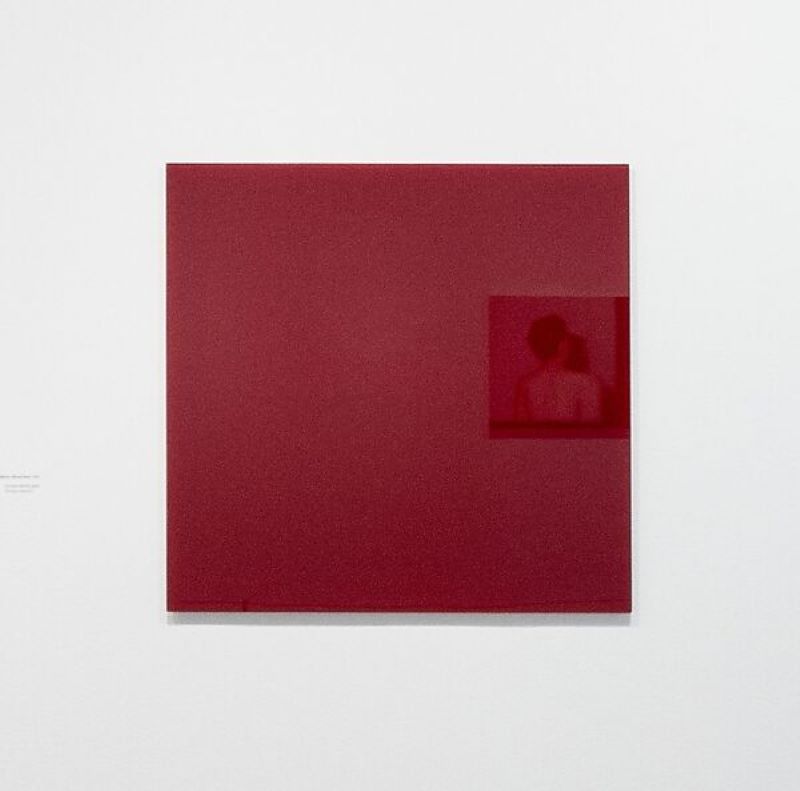
Gerhard Richter's “Blood Red Mirror” is one of his most striking and enigmatic works, painted in 1991. “Blood Red Mirror” is part of a series of works that feature highly polished surfaces. The viewer can see their reflection but in a distorted, blood-red hue. It adds an eerie, almost unsettling quality to the piece, prompting contemplation about perception, reality, and identity.
What makes this painting particularly puzzling is its simplicity paired with its emotional intensity. The deep, reflective red surface evokes a wide range of interpretations - some see it as a meditation on violence and mortality, while others interpret it as a symbol of inner turmoil or passion. Despite - or perhaps because of - its ambiguity, “Blood Red Mirror” has become a significant work in the art world.
In terms of value, “Blood Red Mirror” is emblematic of how Richter's works have soared in price. His pieces, particularly abstract ones like this, have fetched millions at auction.
The “Blood Red Mirror” sold for $1.1 million. Gerhard Richter has twice broken his record for the highest auction price for a painting by a living artist. His previous work, “Abstraktes Bild,” sold for $34 million.
“Untitled” - $2.3 million
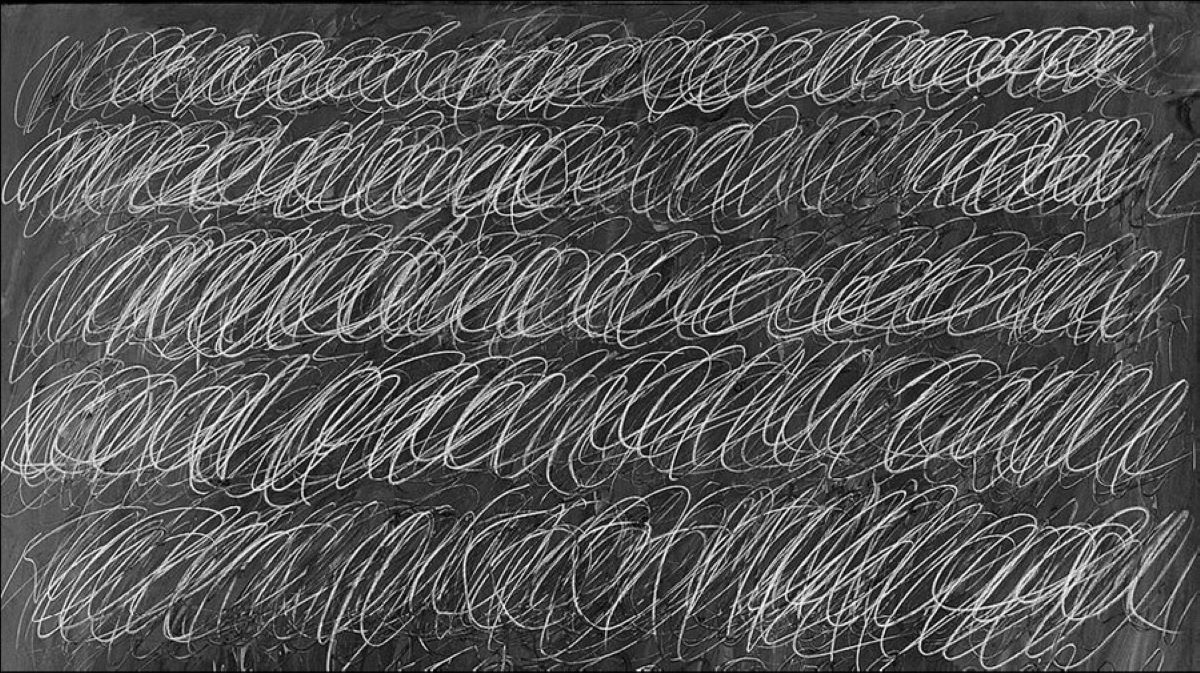
Cy Twombly’s "Untitled" is a perfect example of his unique and unconventional approach to painting. Created in 1970, this work belongs to his series of "blackboard paintings," which are characterized by repetitive, looping lines that resemble chalk scribbles on a school blackboard. The marks on the canvas seem to vibrate with energy, combining chaos and order in a way that evokes movement, rhythm, and raw emotion.
While the painting might appear simplistic at first glance, Twombly’s use of minimalism challenges viewers to look beyond the surface. His works often contain deeper references to history, mythology, and poetry, though they might not be immediately recognizable. The loose, abstract lines in “Untitled” have been interpreted as visual representations of thoughts, emotions, or even the passage of time.
Twombly’s art is often described as enigmatic and cerebral, demanding that viewers engage with it on an emotional or intellectual level. Despite - or perhaps because of - its abstract and puzzling nature, “Untitled” and works from this series have fetched incredibly high prices at auction. This 1970 painting by Cy Twombly sold for $2.3 million at a Christie’s auction.
White Fire I - $3.8 million
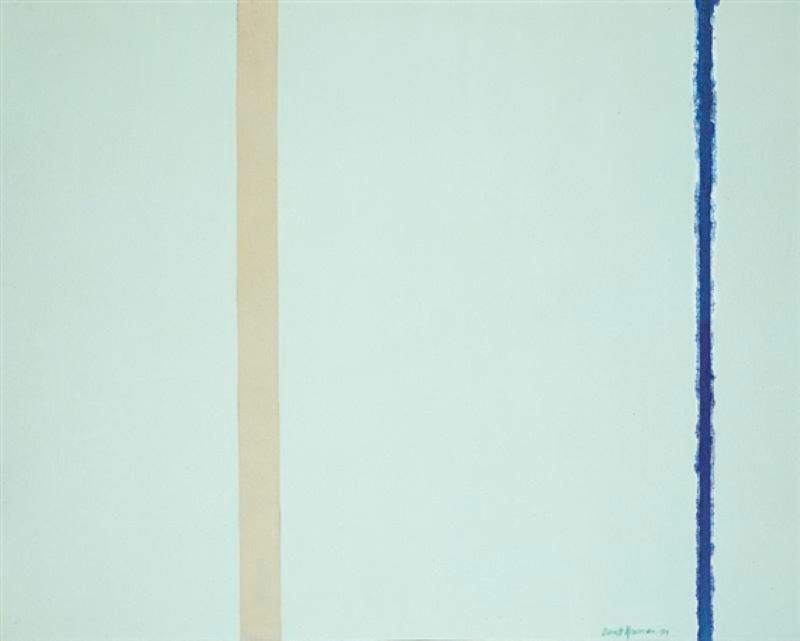
The White Fire I is a powerful and thought-provoking piece that invites viewers to contemplate the nature of space, color, and the human experience. The title of the painting is a mystical term derived from the Torah (the first five books of the Hebrew Bible). So, it certainly has a deep spiritual feel to it that Newman seems to be trying to convey to the viewer in his painting.
Newman used vertical lines, or "zips," to divide bold fields of color, exploring concepts of space, scale, and human experience. “The White Fire I” embodies these ideas with its stark simplicity - a large white canvas interrupted by a single vertical line.
At first glance, the painting may seem overly simple, but for Newman, the "zip" represented something much deeper. He saw it as a way to evoke an immediate and raw emotional reaction from the viewer. The vertical line in “The White Fire I” can be seen as a dividing element that creates tension, simultaneously splitting and connecting the white space around it.
“The White Fire I” has a meditative quality, drawing attention to the power of simplicity and how it can evoke grand, philosophical ideas.
Despite its minimalist aesthetic, Newman’s works, including “The White Fire I”, have fetched astronomical prices in the art market. White Fire I by Barnett Newman was purchased for $3.8 million.
Onement VI - $43.84 million
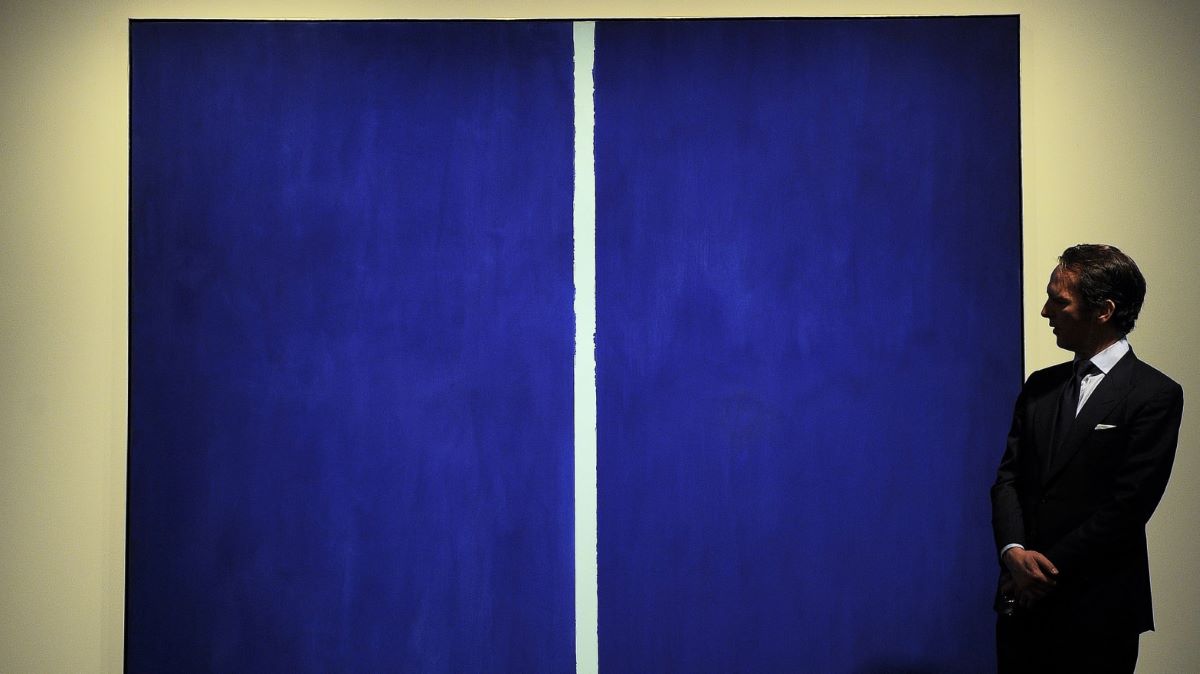
"Onement VI" by Barnett Newman is one of the most iconic examples of his "zip" paintings and a landmark in the minimalist art movement. This large-scale work showcases Newman’s signature style: a solid field of color divided by a single vertical line, or "zip."
In "Onement VI," the deep, rich blue canvas is bisected by a narrow, pale vertical stripe, creating a stark contrast that immediately draws the viewer’s eye.
For Newman, the “zip” represented a way to explore complex ideas of space, existence, and the human condition. The line creates a sense of tension, suggesting both separation and connection, while the vast field of blue invites contemplation. Newman believed his works expressed a sense of the sublime, and "Onement VI" was intended to provoke a direct emotional response, engaging the viewer with the infinite and the existential.
Despite its minimalist appearance, "Onement VI" is loaded with symbolic meaning. The title itself, “Onement,” refers to the idea of atonement or becoming whole, suggesting a unity between the individual and the larger universe. The interaction between the blue field and the zip has been interpreted as a metaphor for the human experience - isolated yet connected to something greater.
In the art world, Barnett Newman’s works, including "Onement VI," have garnered staggering prices. The work fetched a record price of $43.84 million at a Sotheby’s auction held in May 2013 in New York.
Yellow and Blue - $46.5 million

Yellow and Blue exemplify Mark Rothko’s signature style, which focuses on large fields of color and the emotional resonance they evoke. The painting features two dominant, bold color blocks: a radiant yellow on the upper part and a deep, serene blue below. These colors seem to float and interact on the canvas, creating a meditative and immersive experience for the viewer.
Yellow and Blue was sold for $46.5 million at a Sotheby's auction in New York. The work measures 2.42 m x 1.86 m and was completed in 1954.
Rothko’s goal with his color field paintings was to evoke deep emotional responses, often related to spirituality, existentialism, and the human condition. In Yellow and Blue, the contrasting colors might symbolize the balance between different emotions or states of being — perhaps warmth and coldness, light and darkness, or even joy and melancholy. The absence of specific forms or figures in the work invites viewers to project their feelings and interpretations onto the canvas, making it a deeply personal and introspective experience.
What makes Yellow and Blue particularly powerful is its simplicity and Rothko's mastery of color to take center stage. The painting is a prime example of how Rothko used minimalism and abstraction to explore complex emotions with philosophical ideas through color alone.
White Center (Yellow, Pink, and Lavender on Rose) - 72.8 million USD
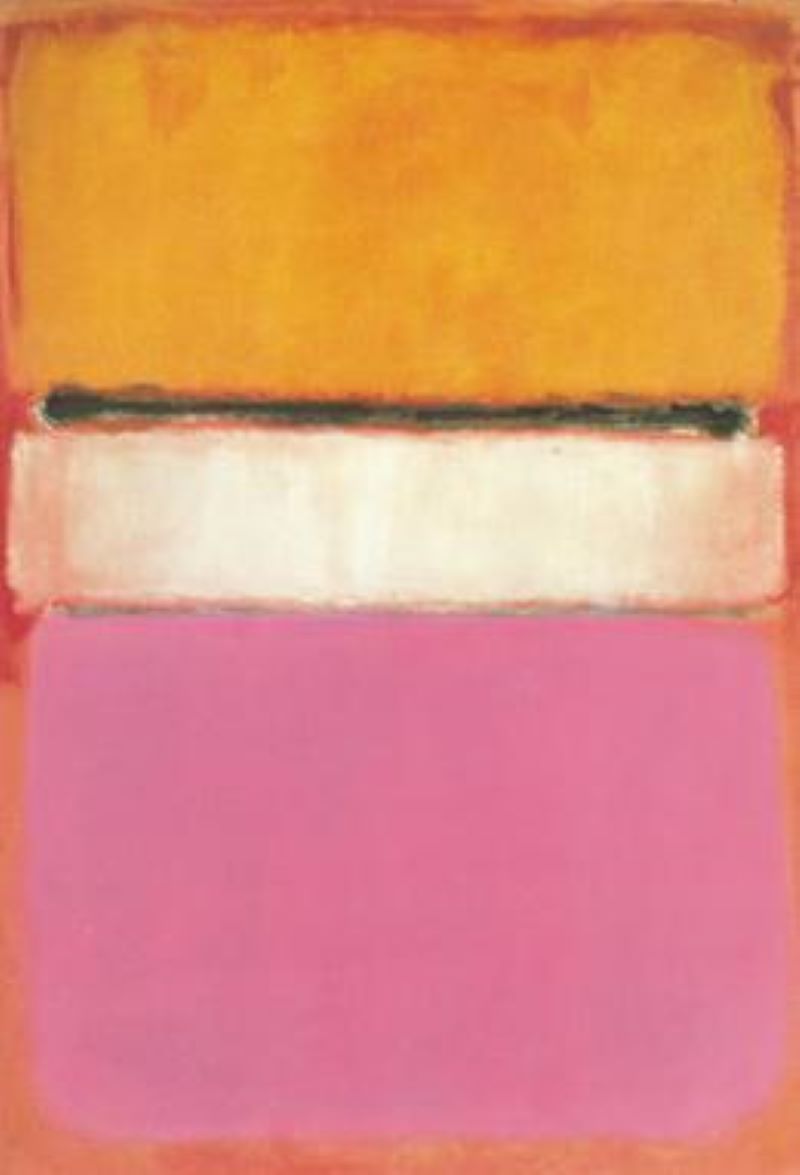
"White Center" is one of the most significant and celebrated works in Mark Rothko's career. It features Rothko’s signature style of color field painting, where large, soft-edged blocks of color are stacked vertically, filling the canvas. In "White Center," a white rectangular band is positioned centrally between vibrant, saturated hues of red, orange, and pink, creating a powerful contrast that makes the painting visually striking and emotionally evocative.
Rothko’s art is often described as abstract, but his intention was not merely to experiment with form and color. He sought to evoke deep emotional responses from viewers, using color as a tool to express profound human experiences such as joy, despair, or tranquility. The placement of the white band in "White Center" creates a sense of balance and tension, inviting contemplation and encouraging viewers to project their feelings onto the painting.
The beauty of "White Center" lies in its simplicity and the intense emotion it communicates through its composition. Rothko avoided traditional titles for his works, often opting for generic ones like "Untitled" or, in this case, "White Center," because he wanted viewers to engage with the painting on a purely emotional level, free from preconceived notions or narrative constraints.
In 2007, "White Center" made headlines when it was sold at auction for $72.8 million, making it one of the most expensive post-war paintings ever sold. "White Center" continues to be admired for its bold color palette, simplicity, and profound emotional impact, solidifying Rothko’s place as one of the most influential abstract expressionists in modern art.
False Start - $80 million

Jasper Johns challenges traditional perceptions of painting in "False Start" by creating a vibrant, chaotic composition that plays with color, language, and form. The canvas is filled with explosive brushstrokes of vivid hues like red, orange, blue, and yellow, layered in a seemingly random fashion. Over this dynamic backdrop, Johns stencils the names of colors - such as "red" or "yellow" - but intentionally mismatches the words with the colors they're associated with.
This deliberate mislabeling creates immediate confusion and forces viewers to question their automatic associations between words and visual experience. "False Start" leads the viewer to confront the gap between perception and language, a recurring theme in Johns' work. The piece plays with the boundaries between what we see and what we think we know, challenging the viewer to look more closely and reconsider their assumptions about art and reality.
The title, "False Start," suggests a sense of misdirection, perhaps alluding to how our understanding of the world can be disrupted or how first impressions can be misleading. The painting itself embodies this idea through its chaotic, energetic composition, where nothing is quite as it seems. Johns' ability to blend elements of abstract expressionism with conceptual art makes "False Start" a powerful statement on how we interpret and make sense of visual information.
In 2006, "False Start" was sold in a private sale for $80 million, making it one of the most expensive paintings ever sold by a living artist at the time. This record-breaking sale cemented Jasper Johns' legacy as a pioneer of contemporary art, whose innovative approach continues to inspire and challenge audiences worldwide.
Orange, Red, Yellow - $86 million
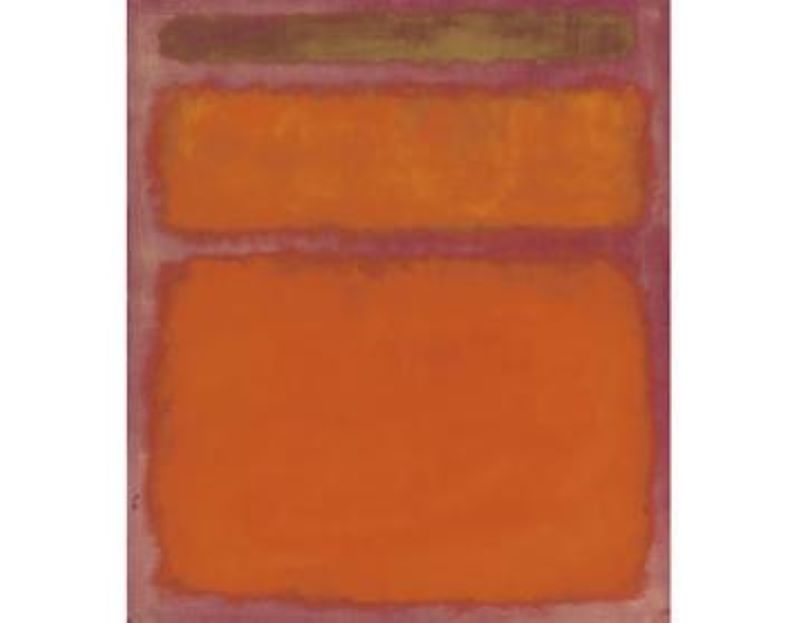
Mark Rothko’s "Orange, Red, Yellow" is where expansive, blurred-edged blocks of color are stacked in soft, luminous layers. In "Orange, Red, Yellow," Rothko uses a radiant combination of warm hues, creating a glowing effect with shades of bright yellow at the top, transitioning to a deep red, and a vivid orange band in between. The painting seems to emit a warm, almost meditative light, enveloping the viewer in its intense, emotional energy.
Rothko's use of color in this piece, like much of his work, is not just a visual experience but an emotional one. He was deeply invested in the idea that color could evoke deep, almost spiritual emotions, and "Orange, Red, Yellow" is a perfect example of this belief. The warm, fiery palette elicits feelings of passion, energy, and perhaps even transcendence. Rothko’s intention was for viewers to stand close to his large paintings so that the colors would dominate their field of vision, allowing them to fully immerse themselves in the emotional experience the colors evoke.
Though abstract in form, Rothko’s works, including "Orange, Red, Yellow," are often interpreted as expressions of human emotion, from joy and love to despair and anguish. The simplicity of the composition belies its emotional complexity, as Rothko believed that through abstraction, he could reach the most fundamental aspects of human experience.
"Orange, Red, Yellow" became the most expensive contemporary artwork when it sold for $86.9 million at an auction held by Christie's in New York. Christie's said the price broke the previous record for the most expensive Rothko painting, $72.84 million, and broke all records for contemporary artworks.
No. 5 - $140 million
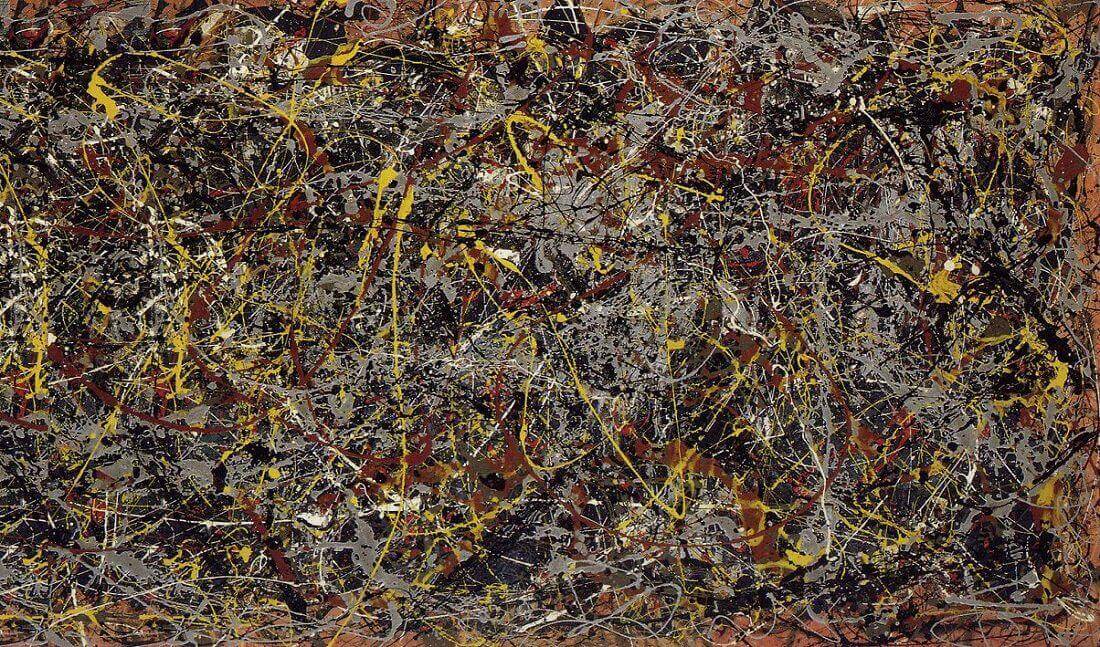
Jackson Pollock's "No. 5, 1948" is one of the most famous and influential examples of his groundbreaking drip painting technique, a hallmark of abstract expressionism. Created in 1948, the painting is a chaotic, intricate web of dripped, splattered, and poured paint, covering a large fiberboard canvas with an explosion of energy and movement. Pollock used layers of brown, yellow, white, and black paint to create a dense, almost tangled surface, full of swirling, looping patterns that seem to pulse with intensity.
Pollock’s method of working was revolutionary at the time. He placed the canvas on the floor and moved around it, dripping and flinging paint in a spontaneous, rhythmic manner. This process, sometimes called "action painting," was less about carefully planned composition and more about expressing raw emotion and energy. "No. 5" exemplifies this freedom and dynamism, capturing the viewer’s attention with its complexity and the way it seems to burst with uncontrolled force while still maintaining an underlying harmony.
The lack of a clear subject or recognizable forms in "No. 5" opens doors for viewers to interpret the piece on a personal and emotional level. Pollock’s aim was to tap into the subconscious and let the act of painting itself become the focus, breaking away from traditional ideas of art. The swirling chaos of the piece can evoke a range of emotions, from tension and anxiety to awe and fascination, depending on the viewer’s perspective.
"No. 5, 1948" has achieved legendary status in the art world, not only for its innovative technique but also for its enormous value. In 2006, the painting was reportedly sold in a private sale for $140 million, making it the most expensive painting in the world at that time. This sale cemented Pollock’s legacy as one of the most influential artists of the 20th century and highlighted the continued significance of his abstract, expressive approach to painting.
Enhance your expertise with Skilltrans through their curated selection of related courses. Please click on the course name below to learn more:
Cartoon Drawing For Absolute Beginners
You will learn how to draw cute cartoon characters. Also, you will learn how to draw simple cartoon backgrounds. We’ll start with the basics. For example whats the anatomy of our cute cartoon characters and what shapes we’ll use to draw them. Then we’ll jump into different facial expressions so that you can express emotion with your characters. Also different hairstyles, a lot of practice sheets, and many more.
Drawing and Colouring: Birds and Flowers (Art as Meditation)
Nature influences art in many we can't imagine art without nature. As it is the source of inspiration for every artist, its the best way to start learning art through nature. Its a kind of meditation in which we relate ourselves with the beauty of nature. When you indulge yourself in activities related to nature you feel calm and relaxed.
In this course you will learn to make beautiful leaves, flowers and exotic and beautiful birds which will not only enhance your painting.
Character Art School: Complete Coloring and Painting
Character Art School is a 6 week learn-anywhere video course where you learn to become adept at coloring and painting professional characters. I’ve hand-crafted the Character Art School: Complete Coloring and Painting course to be the only course you need, to learn all the core fundamentals and advanced techniques to coloring and painting characters well. If you’re an absolute beginner or you’re already at an intermediate level, the course will advance your current ability to a professional level. The course is a comprehensive 5 module guided video course, where the only limit to your progression is your determination and engagement in the rewarding assignments.
Conclusion
The art world has long been captivated by enigmatic and puzzling paintings - works that defy interpretation yet command staggering prices at auction. Their mystery only seems to enhance their allure, making them both artistic and financial treasures. Undeniable, these works offer a glimpse into the boundless depths of human creativity and the power of art to evoke emotions and stimulate thought.
If you have a desire to become a person who is creative and understands works of art, you can register for Skilltrans courses. We have a variety of courses at preferential prices to guide you to achieve your dream.

Meet Hoang Duyen, an experienced SEO Specialist with a proven track record in driving organic growth and boosting online visibility. She has honed her skills in keyword research, on-page optimization, and technical SEO. Her expertise lies in crafting data-driven strategies that not only improve search engine rankings but also deliver tangible results for businesses.



